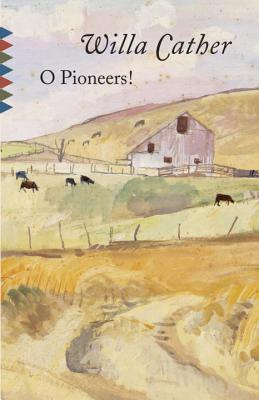
Rarely is a book as delightful as June Gervais’s debut novel, Jobs for Girls with Artistic Flair, a story of people who do their best to be better and then fail and try again with courage and integrity. These characters cannot be dismissed or ignored, because they don’t give up. The novel is about belief: in one’s self, in others, and in the future. These days, such belief can be a difficult emotion to muster, so Gervais’s success in this regard is even more laudable.
The novel takes place in the mid-1980s in the fictional Long Island town of Blue Claw, somewhere near the location of Riverhead, New York. The novel’s time period is one that, until recently, I might have considered to be post-feminist. Women could have it all, we were told, and most of us believed it. Our innocence, or naiveté, had yet to be dashed. But Gina Mulley, the main character of Gervais’s novel, is another case entirely—she exists in a world without labels like feminism.
Gina Mulley’s Long Island is not a bedroom community for Manhattan, nor a wealthy enclave at the beach. It has its beaches, and its trains into The City, but the residents of Blue Claw are mostly stuck in place—underpaid, struggling, lonely. Their lives are hard. The American Dream here isn’t to grow up and get out of Blue Claw; it’s to make it to next month.
And perhaps that is one of the reasons Gina gives me such hope. She has little sense of history or her place in it, and her young adult environment has none of the satisfied sense of arrival that mine did, but it doesn’t matter. Because Gina Mulley is one determined person. She reminds us that a movement is made up of individuals, even if they don’t know it. And it is individual people who create change. So, though she’s a misfit, she’s also a heroine, in her time and in ours.
And these days, we need them.
Initially, it seems that Gina Mulley is not destined for success. She’s a quiet girl who never finishes anything. But now she has finished high school and must decide what she will do with her life. Her brother, Dominic, who runs a tattoo parlor where Gina helps out each day, wants her to go to college.
“You’re getting out of Blue Claw and into a steady job,” he tells her.
When she says she wants to learn the art of tattooing from him, what’s good enough for the brother is not deemed enough for the sister. Because Dominic doesn’t love tattooing. He’s not an artist, per se. And he recognizes that, for Gina, the training will be fraught with physical danger from tough clients, and the real possibility of sexual abuse from bosses and other tattoo artists. The life is not an easy one, and it will be harder for her. Still, he loves his sister and gives in. At the same time, Dominic takes on a business partner and becomes romantically involved with her. This decision has consequences for each of the players at Mulley’s Tattoo, forcing choices that play out over the year of Gina’s apprenticeship.
“You don’t start tattooing on a whim,” Dominic tells her. And that’s because starting and quitting has been Gina’s modus operandi up until now. “Gina Mulley quit jobs like she was bolting out of a haunted house,” one character says, and knowing that’s who Gina has been makes the reader pull for her even harder. Because Gina has thus far been taking what’s been offered to her and making the best of it, despite boredom, bosses who hit on her, and a general sense she deserves as little as she gets.
Underneath Gina’s desperate sense of difference, of not fitting in, runs a perception that her particular gift of “artistic flair” might really be unusual and different. Without intending so, Gina has embarked on a feminist mission. Her designs have a particular subtlety and vision. She wants to take the images she imagines and put them on the bodies of people—women—who will love them. Instead of tattooing the strong men who are the usual customers at Mulley’s, she will provide women with the “flash” that tells their stories, stories of strength and survival. For her own first tattoo, Gina chooses a pair of figs, “…one whole and one halved, scarlet at its core, seeded, wild.” Gina feels as if the figs speak aloud for her, breaking a lifetime of silence. “The figs glowed with a warm wet darkness, brimming with ink. Their color would never be this rich again. Below the tattoo, the long slim pour of her back, pooling into hips she rarely gave thought to, the seam of her spine like the crease in a milky envelope… She hadn’t known this was possible: for something to be so beautiful that it hurt you to look at it.”
As Gina progresses in her apprenticeship with her brother, she meets a young woman named Anna, who works for a professional psychic in Blue Claw. Anna is a Stony Brook University drop out, with as unhappy a backstory as Gina’s, although she seems more easily able to feel and express her emotions. The connection between them is automatic and wholehearted. Neither woman seems to know if they are becoming friends or lovers, and the reader has her fingers crossed, hoping they will both want the same thing. It is impossible to remain uninvested in these characters. They are whole and human, and exist both on the page and off. As they worry about the future, they also learn to live in the present. Gina tells Anna, “If I try to fast-forward too often or zone out when things are hard, I’m going to wake up on my ninetieth birthday and wonder where my life went. I don’t want to miss it.” June Gervais loves these young women, and it shows.
This book is not only about becoming the artist one is meant to be, but also about learning what love is. For Gina’s mother, “a person showed they loved you by never leaving.” Gina will learn something her mother never does, that love is a kind of freedom and friendship that allows you to leave, return, stay, and grow in equal measure. When Anna says, “How you spend your days is how you spend your years is how you spent your life,” the reader feels an acute sense of recognition. Gina’s mother only wants the same unchanging situation over and over, but Gina, and Anna, come to realize something different, more beautiful, more necessary about how one’s life should unfold. “How to love without grasping?” Gina asks, and this basic question becomes a fundamental truth they provide for themselves, rather than following those who came before them.
Gervais did extensive research on tattooing for the novel, including interviews with Lynn TerHaar, owner of Bohemia’s Dutchman Tattoo, and Long Island’s first woman tattoo parlor owner (her original place, founded in 1991, is now also owned by a woman tattoo artist, one trained by TerHaar herself). Artistry is the watchword here: specificity of line and color, depth and detail rendered on the human body. Interspersed throughout the text are black and white drawings by Gervais. The drawings subtly underscore the events of the novel, as if Gervais’s artistry has bubbled over and expanded into other forms. If the goal is to awe the viewer, TerHaar’s (and Gervais’s) work nimbly succeeds. And that is what Gina Mulley aspires to as well.
I did not know the Long Island of June Gervais’s Jobs for Girls with Artistic Flair—I knew only the most basic details about tattoo art, and about the difficulty women had in breaking into the trade. The lingo of tattooing, the difficulties of working with different skin textures, the challenges of drunk clients and how to fix mistakes were all fascinating to learn about. Even the why of wanting tattoos was rendered in all its complexities. When one of Gina’s male mentors says to her that “Tattooing is like being a bartender or a barber. Somebody survives something, they need to mark it,” this impulse is certainly understandable.
But that’s the guy version.
Gina’s realization is even more compelling: that a tattoo is “a truth you‘d kept to yourself that you were finally willing to have in the open, to be seen.” Gervais’s novel leaves the reader with similarly stunning truths, in telling the story of a young woman from an uncertain, lonely childhood who discovers that home is what you make of it, that love involves allowing others the freedom to grow and change, and, most importantly, that Jobs for Girls with Artistic Flair should really be, simply, Jobs for Artists.
Susan Scarf Merrell is the author most recently of Shirley: A Novel, now a major motion picture starring Elisabeth Moss and Michael Stuhlbarg. Merrell is an associate professor in the MFA in Creative Writing & Literature at Stony Brook Southampton, where she and Meg Wolitzer co-direct the novel incubator program BookEnds.




